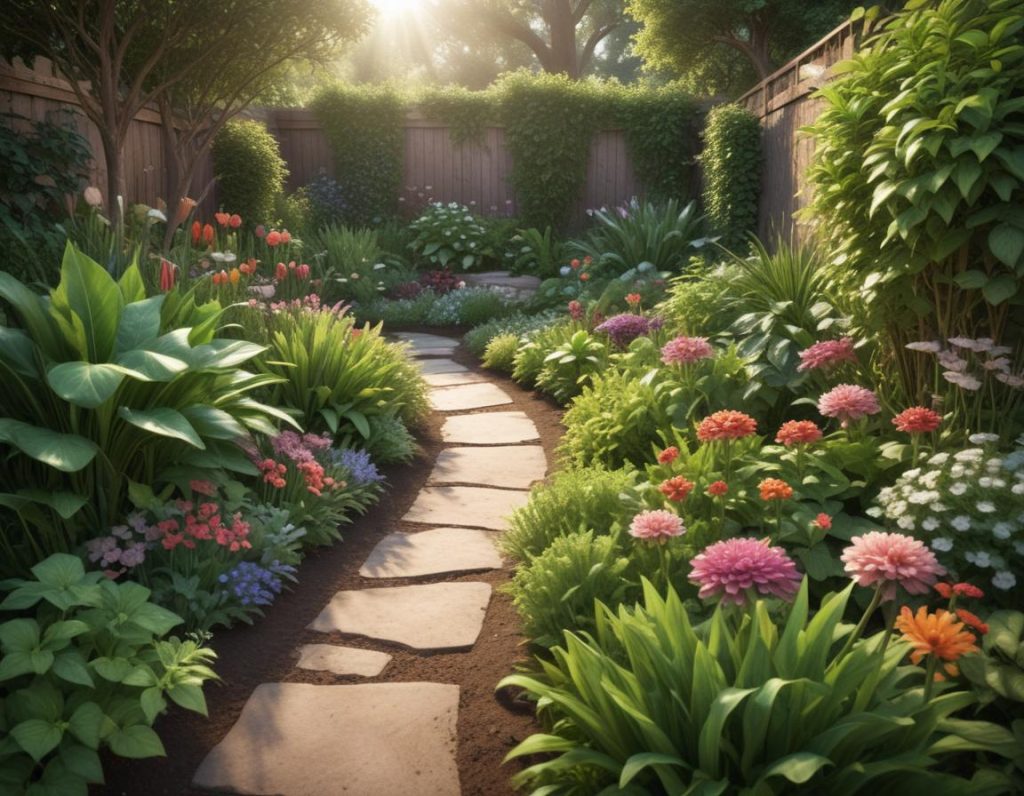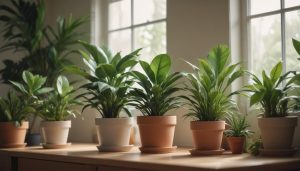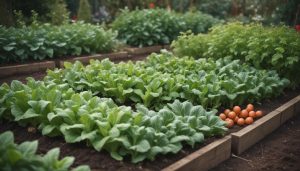Sustainable Gardening Practices for Beginners
Jessica White August 7, 2025
As environmental consciousness grows, many people are turning back to their roots—literally. Sustainable gardening practices for beginners have become an emerging trend in the home & garden sphere as individuals seek to maintain green spaces with minimal ecological impact. Whether you’re a seasoned gardener or a curious novice, integrating sustainable gardening into your life will yield rewarding and environmentally friendly results. By incorporating nature-friendly methods, you’ll help foster healthy ecosystems while enjoying bountiful harvests, beautiful landscapes, and a closer connection to the environment.

Why Sustainable Gardening?
Sustainable gardening is more than just a passing trend; it’s an approach that has numerous long-term benefits. Not only does it support the well-being of the planet, but it also cuts down on long-term costs and labor. By understanding and working with nature, gardeners can reduce the need for artificial inputs such as chemical fertilizers and synthetic pesticides. Furthermore, sustainable practices focus on creating a balance where plants thrive naturally, reducing dependency on external resources.
Here are some of the key reasons why sustainable gardening is gaining popularity:
- Reduces environmental impact by minimizing chemical runoff and soil erosion. Sustainable gardens focus on natural pest control and soil enrichment, reducing pollution and conserving resources.
- Encourages biodiversity, which supports pollinators like bees, butterflies, and other beneficial insects, leading to healthy ecosystems.
- Promotes soil health, which is crucial for robust plant growth. Practices like composting and mulching ensure that soil remains nutrient-rich and fertile for years to come.
- Cost-effective and reduces dependency on external resources. By reducing the need for store-bought fertilizers, pesticides, and water, sustainable gardening can save you money over time.
For more on sustainable gardening’s impact, check out EPA’s Guide to Organic Yard Wastes.
Getting Started with Sustainable Gardening
Choose the Right Plants
Selecting the right plants is the first step to building a sustainable garden. Opt for native plants, which are naturally adapted to your local climate and soil conditions. Native plants typically require less water and are more resilient to pests, making them an excellent choice for beginners aiming to conserve resources. Moreover, native plants support local wildlife and biodiversity, creating a thriving ecosystem in your backyard.
Composting: Nature’s Recycling Strategy
Composting is a simple yet effective way to reduce waste while improving soil quality. By converting organic waste, such as food scraps and yard clippings, into nutrient-rich compost, you provide your garden with natural fertilizer. Not only does composting reduce landfill waste, but it also enriches the soil, enhancing plant growth and overall garden health.
Here’s a simple guide to composting:
- Start with a mix of greens (fruit and vegetable scraps, grass clippings) and browns (dry leaves, straw, wood chips).
- Keep the compost pile moist but not waterlogged.
- Turn the pile regularly to speed up the decomposition process.
- Once it turns crumbly and dark, it’s ready to use as a natural fertilizer for your garden beds.
For more details on composting, read EPA’s Composting Guide.
Strategies for Water Conservation
Water conservation is an essential element of sustainable gardening. Consider the following methods to reduce water usage and make the most of natural rainfall:
Rainwater Harvesting
Collecting rainwater reduces the demand on local water supplies and ensures that your plants receive clean, chemical-free water. Installing a rain barrel is an affordable and simple way to capture rainwater and use it for watering your garden.
Drip Irrigation Systems
Drip irrigation is a highly efficient method of watering that focuses on the root zones of plants, minimizing water waste. Unlike traditional sprinklers, which waste water by spraying onto pathways and non-planted areas, drip systems direct water exactly where it’s needed. Additionally, drip irrigation helps keep plant leaves dry, reducing the risk of fungal diseases.
For more on drip irrigation, check out Frontiers in Plant Science’s article on Deficit Irrigation.
Maintaining Soil Health
Healthy soil is the foundation of a sustainable garden. By using practices like crop rotation, mulching, and adding organic matter, you can ensure that your soil remains fertile and capable of supporting plant growth for years to come.
Here’s how you can maintain healthy soil:
- Practice crop rotation to prevent nutrient depletion and minimize pest buildup.
- Use mulch to retain moisture in the soil, suppress weeds, and add organic matter to enrich the soil.
- Add cover crops like clover during the off-season to prevent soil erosion and enhance soil fertility.
For more on maintaining soil health, see U.S. Fish & Wildlife’s Native Plants Guide.
Integrated Pest Management (IPM)
IPM focuses on the long-term prevention of pests through a combination of natural techniques, rather than relying on chemical pesticides. By using environmentally friendly methods, you can maintain a healthy balance in your garden.
Some IPM techniques include:
- Encouraging beneficial insects (such as ladybugs and lacewings) that feed on harmful pests.
- Setting up physical barriers like row covers to protect plants from insects.
- Using natural pest control options, like neem oil, to manage pest populations without harmful chemicals.
For more on IPM, read The USDA’s Guide to Integrated Pest Management.
Conclusion
Adopting sustainable gardening practices benefits both your garden and the planet. By focusing on water conservation, composting, and maintaining soil health, you can create a thriving ecosystem right in your backyard. Whether you’re completely new to gardening or seeking to make your garden more eco-friendly, sustainable methods offer both simplicity and spectacular results. In the end, sustainable gardening is not only about growing plants but about fostering a healthy, balanced relationship with nature.
References:
- U.S. Fish & Wildlife Service. (2021). Native Plants for Wildlife Habitat and Conservation Landscaping. Retrieved from https://www.fws.gov/Chesapeakebay/NativePlants.html
- EPA. (2021). Composting: A Guide to Managing Organic Yard Wastes. Retrieved from https://www.epa.gov/recycle/composting-home
- Frontiers in Plant Science. (2017). Efficiency of Drip Irrigation for Deficit Irrigation. Retrieved from https://www.frontiersin.org/articles/10.3389/fpls.2017.00830/full







